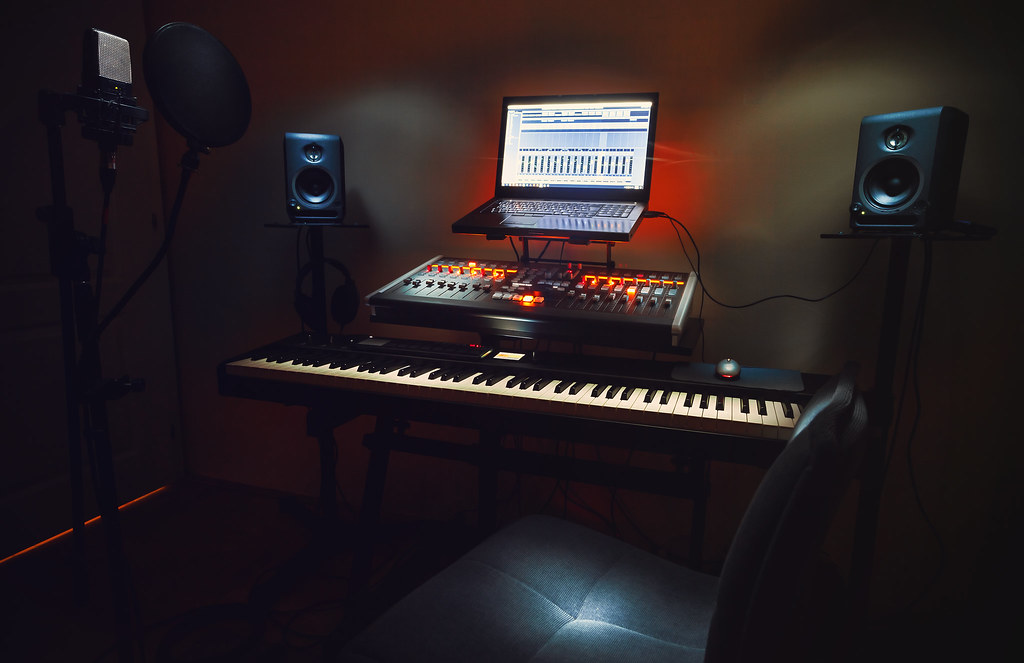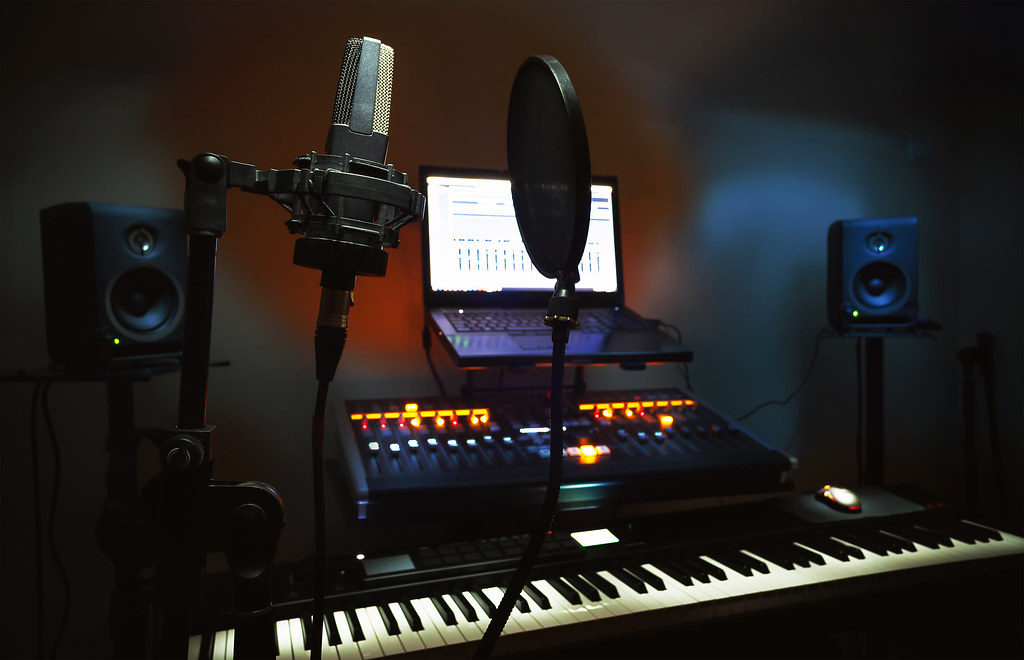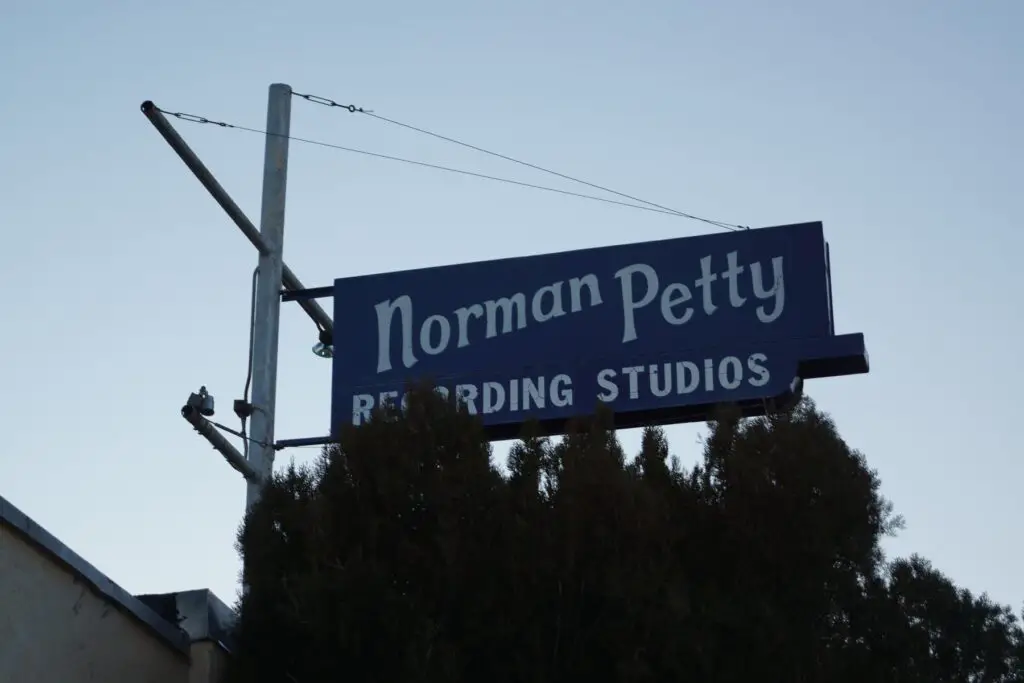Are you looking to create music at home? As a musician, having the right equipment is essential to producing high-quality music. In this article, we’ll guide you through the equipment needed for music production. We’ll cover the basic components of a home recording studio, room acoustics, and specific recommendations for brands and models of essential equipment. Whether you’re a beginner or a professional, this guide will help you choose the right equipment to create your own home recording studio.
Table of Contents

Essential Equipment for Music Production
To produce music at home, you must have the essential equipment. Here are the basic components of a home recording studio:
Computer
A computer is the backbone of your home recording studio as it allows you to run recording software and plugins. When choosing a computer, consider the specifications required to run your recording software smoothly. Mac and PC are both popular choices, but make sure your computer has enough RAM, a fast processor, and enough storage space to handle your projects.
Audio Interface
An audio interface is necessary to connect your microphone and other equipment to your computer. It converts analog signals to digital signals and vice versa. Some popular brands for audio interfaces include Focusrite, PreSonus, and Universal Audio. When choosing an audio interface, consider the number of inputs and outputs you’ll need, as well as the quality of the preamps. A good audio interface should have low latency, high sample rates, and a durable build.
Microphone, Cables, and Stands
To capture and record sound, you’ll need a microphone, cables, and stands. Popular microphone brands include Shure, AKG, and Audio-Technica. When choosing a microphone, consider the polar pattern, frequency response, and sensitivity. Dynamic microphones are great for recording loud sources like drums and electric guitars, while condenser microphones are better for capturing delicate sounds like vocals and acoustic guitars. Cables and stands can be purchased from a variety of manufacturers.
Essential Software for Music Production
Recording software and plugins are crucial for music production at home. Some popular recording software options include Pro Tools, Logic Pro, and Ableton Live. Plugins can be used to add effects, EQ, and compression to tracks. Additionally, music software programs such as GarageBand or FL Studio can also be useful for beginners or those on a budget. When choosing recording software and plugins, consider your needs and budget, and choose a brand and model that fits those requirements.
Room Acoustics and Recording Space Optimization
The acoustics of your room play a crucial role in the quality of the sound that you record. Poor acoustics can lead to unwanted echoes and reverberations, resulting in a muddied and unclear sound. To optimize your recording space, consider treating the walls and ceilings with sound-absorbing materials like acoustic foam panels or blankets. Additionally, using reflection filters and bass traps can help improve the quality of your recordings by reducing unwanted noise. When treating your recording space, consider your needs and budget, and choose materials that fit those requirements.
Recommendations for Specific Brands and Models of Essential Equipment
When choosing essential equipment for your home recording studio, it’s important to consider your needs and budget. Here are some recommendations for specific brands and models of essential equipment:
- Computer: Macbook Pro, Dell XPS, or HP Envy
- Audio Interface: Focusrite Scarlett 2i2, PreSonus AudioBox, or Universal Audio Apollo Twin
- Microphone: Shure SM7B, AKG Pro Audio C214, or Audio-Technica AT4053b
- Cables and Stands: Mogami Gold Studio XLR Cables, On-Stage MS7701B Tripod Microphone Stand, or K&M 210/2 Microphone Stand
These recommendations are just a starting point, and you should do your own research to find the equipment that best suits your needs and budget.

Studio Monitors and Headphones
Accurate sound reproduction is essential for music production, and studio monitors and headphones are two tools that can help achieve it. Studio monitors are specialized speakers designed for use in a recording studio, while headphones allow for more precise monitoring of sound. In this section, we’ll explore the differences between studio monitors and headphones and provide recommendations for specific brands and models.
Studio Monitors
Studio monitors are designed to reproduce sound as accurately as possible. They have a flat frequency response, meaning that they do not color the sound in any way. This allows you to hear the mix as it truly is, without any added bass, treble, or other frequencies. Studio monitors come in various sizes and configurations, from small near-field monitors to large midfield monitors.
Some popular brands for studio monitors include Yamaha, KRK, and JBL. When choosing studio monitors, consider your needs and budget, and choose a brand and model that fits those requirements. Look for monitors with a low distortion rate, high-quality drivers, and good frequency response. It’s also important to consider the acoustics of your recording space and the positioning of your monitors for the best sound reproduction.
Headphones
Headphones are another tool that can be used for monitoring sound in music production. They allow for more precise monitoring of individual tracks and can be useful for checking the stereo image of a mix. When choosing headphones, look for a flat frequency response, good isolation, and a comfortable fit.
For headphones, Sennheiser, Beyerdynamic, and Audio-Technica are well-known brands. When choosing headphones, consider your needs and budget, and choose a brand and model that meets those requirements. Look for headphones with a good balance between low, mid, and high frequencies, as well as good transient response and a low distortion rate. It’s also important to consider the comfort of the headphones, especially if you’ll be wearing them for long periods of time.
In conclusion, both studio monitors and headphones are important tools for accurate sound reproduction in music production. By choosing the right brands and models, you can ensure that your mixes sound great on a variety of playback systems.

MIDI Controllers and Synthesizers
MIDI controllers and synthesizers are crucial components in music production, allowing users to create and manipulate sounds.
Types of MIDI Controllers and Their Uses
MIDI controllers come in various types, including keyboards, drum pads, and faders, each serving a specific purpose. Keyboards are versatile, allowing users to play melodies, chords, and basslines. Drum pads are ideal for creating percussive rhythms and beats. Faders are best used for controlling the volume, panning, and effects of individual tracks.
Types of Synthesizers and Their Uses
Synthesizers can be hardware or software-based and are used to generate a wide range of sounds, from classic analog synth tones to modern digital textures. Hardware synthesizers offer a more tactile and hands-on approach to sound design, while software synthesizers offer a more cost-effective and versatile solution.
Popular Brands for MIDI Controllers
Some of the most popular brands for MIDI controllers include Akai, Novation, and M-Audio. When choosing a MIDI controller, it’s important to consider your needs and budget and choose a brand and model that fits those requirements. For example, the Akai MPK Mini is a popular choice for beginners, while the Novation Launchpad Pro is a great option for live performance and creative experimentation.
Popular Brands for Synthesizers
Popular synthesizer brands include Korg, Roland, and Moog, each offering unique features and sonic capabilities. When choosing a synthesizer, consider your needs and budget, and choose a brand and model that meets those requirements. For example, the Korg Minilogue XD is a versatile and affordable option for beginners, while the Moog One is a high-end synthesizer with unparalleled sound quality and flexibility.

Recording Accessories and Add-Ons
Recording accessories and add-ons can help enhance the quality of your recordings and improve your overall home recording studio setup. Some popular accessories and add-ons include:
Pop Filters
Pop filters are essential for recording vocals and can help reduce popping sounds caused by plosive consonants like “p” and “b.” They are inexpensive and easy to use, and can make a big difference in the quality of your recordings. Some popular brands for pop filters include the Samson PS01 and the Stedman Corporation Proscreen XL.
Shock Mounts
Shock mounts are devices that help reduce vibrations and unwanted noise when recording. They are typically used for microphones, but can also be used for other equipment like studio monitors. Shock mounts come in various shapes and sizes and can be made from different materials like rubber or elastic bands. Some popular brands for shock mounts include Rycote and On-Stage.
Reflection Filters
Reflection filters are devices that help improve room acoustics by reducing the amount of sound reflections that bounce off walls and ceilings. They are typically used behind the microphone and can help create a more isolated recording environment. Some popular brands for reflection filters include Aston Microphones and SE Electronics.
Monitor Pads
Monitor pads are foam or rubber pads that are placed under studio monitors to isolate them from vibrations and improve sound quality. They are inexpensive and easy to use, and can help prevent sound from bleeding into other microphones or recording tracks. Some popular brands for monitor pads include Auralex and IsoAcoustics.
When choosing recording accessories and add-ons, it’s important to consider your needs and budget, and choose a brand and model that meets those requirements. While there are many options available on the market, it’s important to invest in quality equipment that will enhance the quality of your recordings and improve your overall home recording studio setup.

Recording Equipment for Beginners
If you are just starting out with music production, you may not need all of the equipment mentioned above. Here is the basic equipment required for beginners to start recording music at home:
Basic Equipment for Beginners
To start recording music at home, you will need the following basic equipment:
-
Computer: You will need a computer or laptop to run your recording software and audio interface. Make sure your computer meets the requirements of your recording software and has enough processing power to handle your projects.
-
Recording Software: There are many recording software options available for beginners, ranging from free options like Audacity to paid options like Ableton Live and FL Studio. Choose a software that fits your budget and has the features you need to record and edit your music.
-
Audio Interface: An audio interface is a device that connects your computer to your microphone and allows you to record and play back audio. The Focusrite Scarlett Solo audio interface is a great option for beginners, as it’s affordable and easy to use.
-
Microphone: A microphone is an essential tool for recording vocals and acoustic instruments. The Shure SM58 microphone is a popular and affordable option for beginners.
It is also important to consider the acoustics of your recording space. You can invest in basic sound treatment materials like acoustic foam or blankets to reduce unwanted echoes and reverberations.
Affordable Equipment Options
If you’re on a tight budget, here are some affordable equipment options for beginners:
-
Focusrite Scarlett Solo audio interface: This audio interface is a great option for beginners, as it’s affordable and easy to use.
-
Shure SM58 microphone: This microphone is a popular and affordable option for beginners, as it’s durable and versatile.
-
Audacity recording software: Audacity is a free and open-source recording software that is great for beginners who want to learn the basics of recording and editing their music.
Conclusion
In conclusion, having the right equipment is crucial to creating high-quality music at home. A well-equipped home recording studio should have a computer, audio interface, microphone, cables, and stands. However, to take your music production to the next level, you’ll also need studio monitors, headphones, MIDI controllers, synthesizers, recording software, and plugins.
It’s important to choose the right equipment based on your needs and budget. Take the time to research and test out different brands and models before making a purchase. Remember that investing in quality equipment can save you time and money in the long run.


